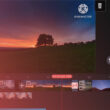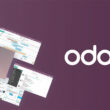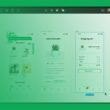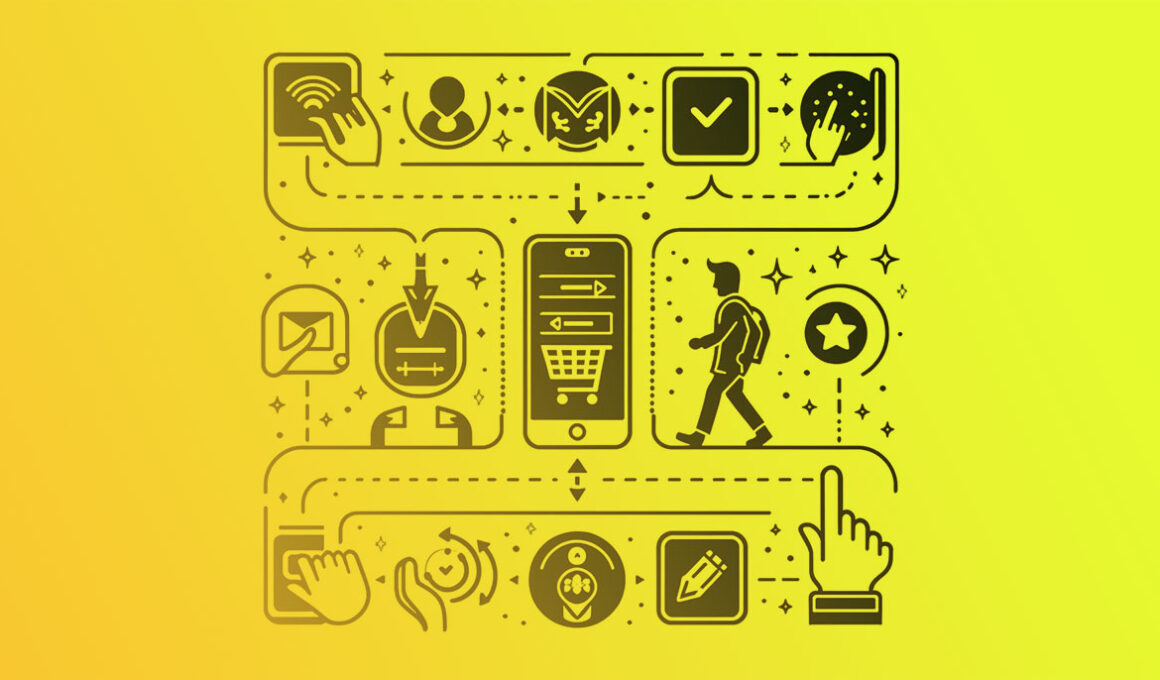Imagine this. You’ve built an app. It’s slick, functional, and ready to rock the digital world – but will it, truly? The app user journey isn’t a straight line; it’s an odyssey, each step crucial to retaining every user who gives your creation a spin.
The exhilarating rush of downloads might give you a buzz, but it’s what happens next that counts. Engage? Convert? Stick around? That’s where the real game begins.
And that’s precisely what this deep-dive article unfolds. It’s a treasure map to navigating the choppy waters of user acquisition strategies and conversion funnels.
Here, we strap you in for a ride through the veins of the user experience (UX), outwitting drop-off points, fuelling touchpoint optimizations, and pivoting around churn rates quicker than a tap on a screen.
By the end, expect to harness the horsepower of behavioral analytics, refine onboarding processes, and snag those app retention rates you’ve dreamt about.
We’re going under the hood of app user journey – no frills, just the essentials – enlightening you, step by decisive step.
The Stages of the Mobile App User Journey
Navigating the ins and outs of the app user journey is like guiding a rocket through space – every stage is a mission critical phase. So let’s buckle up and launch into the cosmos of clicks, taps, and scrolls that define this epic quest.
Discovery and Awareness
Channels of Discovery
Space is vast, and so is the online galaxy where users discover apps. The journey kicks off with organic search, a universe where keywords play a pivotal role.
Then there’s paid advertising, like a billboard in the sky, capturing attention with its bright lights. Social media referrals act as trusty sidekicks here, buzzing about, pointing folks to shiny new apps.
The Role of App Store Optimization (ASO)

ASO is the trusty GPS, leading potential users straight to apps. It’s all about making sure the app shines bright when they’re scrolling the app cosmos.
Creating a Positive First Impression
The adventure begins here. Like that opening scene of a show that grabs you – the app’s got to woo users at first glance.
Consideration and Engagement
The Evaluation Process by Users
Users turn into critics, comparing features, dissecting usability – app developers gotta anticipate and ace these tests.
Reading reviews becomes their homework, a make-or-break stage in the app user journey.
Importance of an Intuitive User Interface
A smooth glide is essential. The user interface must be as intuitive as a childhood game – familiar, easy, fun.
Strategies to Re-engage Users
Spaceships might drift, but there are ways to recalibrate. Novelties, notifications, updates, and rewards – all part of the master plan to bring drifting ships home.
Conversion and Onboarding
Optimizing the Onboarding Experience

First impressions? They need to be killer. Welcoming users is about clear instructions, a simple hello, and a no-fuss sign-up. Keep it breezy, keep it friendly.
The First Interaction: Setting the Stage for Retention
That’s where the bond forms, on that first “date,” with the app. Make it memorable, and they’ll be back for more.
Exploration
Encouraging Feature Discovery
Don’t let those fancy app features hide in the dark. Light them up, showcase each one, make them irresistible.
Personalization to Enhance User Experience
Add that secret sauce – personalization. Users should feel like the app gets them, knows them like an old pal.
Monetization
In-app Purchases vs. Ad Revenue Models
| Feature | In-app Purchases (IAP) | Ad Revenue Model |
|---|---|---|
| Revenue Source | Direct sales from users | Advertisers paying for ad space within the app |
| User Experience | Can enhance or disrupt, depending on design | Often disruptive, depends on ad frequency & relevance |
| Revenue Predictability | Relatively unpredictable, depends on user engagement and spending habits | More predictable if the app has steady user traffic |
| Implementation Complexity | Requires payment processing systems, item catalog, security measures | Integration with ad networks or direct ad sales |
| Control Over Monetization | High, the developer sets prices and offerings | Lower, dependent on ad network policies and rates |
| Scalability | Limited by the user’s willingness to pay | Potentially high, as revenues grow with user base |
| Customer Relationship | Direct relationship with paying customers that may lead to better retention | Indirect, users have no transaction with the developer |
| Required User Base | Can be profitable with a smaller, dedicated user base | Typically requires a large user base to generate significant revenue |
| Impact on App Design | Can lead to designing around encouraging purchases | Requires space and consideration for ad placements |
| Typical Use Case | Common in games, premium productivity apps, and services | Widespread in free-to-use apps, games, and utilities |
| Threshold for Earning | Users can spend at any time, no threshold | Often subject to minimum payout thresholds by ad networks |
| Data and Privacy Concerns | Involves handling sensitive payment information | May involve sharing user data with advertisers |
| Potential for Recurring Revenue | High, through subscriptions or repeat purchases | Steady as long as users keep engaging with the app |
| User Perception | Can be negative if perceived as “pay-to-win” or essential for progress | Negative if ads are too intrusive or frequent |
Finding that sweet spot between making a buck and keeping users happy – it’s a delicate dance. In-app purchases and ads each have their rhythm.
Strategies to Encourage Purchases Without Deterring Users
Encouraging in-app purchases (IAP) without deterring users is about finding the right balance—providing value while not hindering the user experience. Below are several strategies to achieve this:
- Value-Based Pricing: Price your in-app offerings according to the perceived value they provide. Make sure users feel they’re getting their money’s worth.
- Freemium Model: Offer the core app experience for free, while premium features, content, or virtual goods are gated behind a paywall. Ensure that the free version of the app is still functional and satisfying.
- Limited-Time Offers: Create urgency and encourage purchases with special deals. This may include discounts, bonus items, or unique content available for a limited period.
- Bundling: Package multiple items or features together at a reduced price compared to buying them separately, making the purchase more attractive.
- Loyalty Rewards: Implement a reward system for frequent use or purchases, similar to a loyalty card at a store. This might include discounts or free items after a certain number of purchases or actions within the app.
- Soft Currency vs. Hard Currency: Use a dual-currency system where ‘soft’ currency can be earned through gameplay, while ‘hard’ currency, which can buy premium items, is purchased with real money.
- First-Purchase Incentives: Offer incentives such as discounts or bonuses on a user’s first in-app purchase to encourage the initial spend, which can also break down the psychological barrier to spending.
- Seamless Purchase Process: Ensure that the purchase process is quick, easy, and secure. A complicated checkout can deter potential buyers.
- High-Quality Content: Continuously deliver high-quality, desirable content or features for purchase, which feels like a natural extension of the app experience.
- Personalization: Personalize in-app purchase offers based on user behavior and preferences. When users feel an offer is specifically tailored for them, they’re more likely to purchase.
- Social Features: Integrate social aspects like gifting, wish lists, or showing off purchases on social media to encourage users to buy and share with friends.
- Trial Before Purchase: Give users a chance to try premium features for a limited time. Familiarity with the features can lead to a purchase.
- Transparent Communication: Be upfront about what users are getting for their purchase. Avoiding any feeling of deceit can build trust and encourage purchases.
- Non-Paywall Content Updates: Release new content that doesn’t require payments, which keeps users engaged and may attract them to premium paid features.
- Customer Feedback: Listen to your users and make changes based on their feedback to align your IAP offerings with their desires and needs.
- Seasonal Events: Capitalize on holidays and events by offering thematic content, sales, or events that encourage users to engage and purchase.
- Educate Users About Benefits: Use tutorials or informational content to explain the benefits of premium features, helping users understand what they’re missing out on.
Retention and Loyalty
Key Metrics for Measuring Retention
Retention metrics are the compass that guides the ship. They tell us if users love the app or if they’re just passing by.
- Retention Rate: This is the most direct metric for measuring user retention. It is calculated by determining the percentage of users who return to the app after their first visit within a specific time frame, often 1 day (D1), 7 days (D7), or 30 days (D30). The formula is:Retention Rate = (Number of users at the end of the period – Number of new users acquired during the period) / Number of users at the start of the period
- Churn Rate: This metric is the inverse of retention, representing the percentage of users who stop using the app over a given period. A high churn rate indicates poor retention.Churn Rate = 1 – Retention Rate
- Cohort Analysis: Cohorts are groups of users segmented based on their sign-up date or the first time they used the app. By analyzing different cohorts, you can understand how changes in the app or external factors affect user retention over time.
- Session Length and Frequency: Session length is the average amount of time users spend in the app during a single session, whereas session frequency is how often they open the app within a given time frame. Both are indirect indicators of user engagement and, thus, retention.
- Lifetime Value (LTV): LTV is the total revenue you can expect from a single user over the course of their relationship with the app. This metric is essential for understanding the long-term value of maintaining user retention.
- Revenue Retention Rate: For apps with in-app purchases or subscription models, this metric measures the retained revenue from existing users over a specific period, not accounting for new sales.
- Customer Lifetime (CLT) or Time to Churn: This is the average time before a user stops using the app. It is an essential metric for subscription-based or service-oriented apps.
- Net Promoter Score (NPS): Although primarily a measure of customer satisfaction, NPS can also be an indicator of user retention, as satisfied users are more likely to continue using an app.
- Active Users (DAU/MAU): The number of Daily Active Users (DAU) and Monthly Active Users (MAU) are basic metrics that show how many unique users interact with the app daily or monthly, respectively.
- Rolling Retention: This measures the percentage of users who return to the app at least once after a specific day. Unlike classic retention that looks at a user coming back on a specific day (like D7), rolling retention looks if a user comes back after that day (after D7).
Strategies for Maintaining Ongoing Engagement
Keep users hooked with content that makes ‘em look twice, with features that feel like the app is growing along with them.
Advocacy
Transforming Users into Advocates
Cruise the extra mile, and you’ve got yourself brand champions. Users who love the app will shout it from digital rooftops.
Leveraging User Feedback for App Improvement
Last up, it’s all about listening. User feedback? It’s gold. Treasure it, use it, to make the app shine. That’s it – the natural cycle. The app user journey is a tale of curiosity, discovery, companionship, and eventually, kinship.
Creating a Mobile App User Journey Map
Plotting a map is like drawing a treasure trail, right? And when it’s about charting the app user journey, it’s no less than scribbling a path to the hidden gems of user engagement and satisfaction.
Defining Objectives and Goals
The Purpose Behind Mapping the User Journey
So why do we map? Well, it’s all about vision, about plotting routes that’ll take users where we want them to go – while giving them what they need.
It’s a guide, a strategic blueprint, outlining the paths they may take.
Identifying Key Performance Indicators (KPIs)
- Acquisition Metrics:
- Number of Downloads
- Install Rate
- Cost per Acquisition (CPA)
- Sources of Traffic (organic, paid ads, referrals, etc.)
- Click-Through Rate (CTR) on ad campaigns
- Activation Metrics:
- First Time User Experience (FTUE) completion rate
- Account Sign-ups
- User Onboarding Completion Rate
- Time Spent on Onboarding
- Activation Rate (percentage of users taking the desired first action)
- Early-stage Retention (e.g., Day 1, Day 3 retainment)
- Engagement Metrics:
- Daily Active Users (DAU)
- Monthly Active Users (MAU)
- Session Length (average time spent in the app per session)
- Session Interval (average time between sessions)
- Screen Flow (navigation behavior within the app)
- Feature Usage (how often particular features are used)
- In-App Behaviors (e.g., number of items liked, comments made)
- Retention Metrics:
- Retention Rate (Day 7, Day 30, etc.)
- Churn Rate
- Rolling Retention
- Cohort Analysis (behavior of users who started using the app at similar times)
- Customer Lifetime Value (CLV)
- Monetization Metrics:
- Average Revenue Per User (ARPU)
- Lifetime Value (LTV)
- Revenue Retention Rate
- Purchase Frequency
- Conversion Rate (from free to paying user)
- In-App Purchase Volume
- Referral Metrics:
- Net Promoter Score (NPS)
- Viral Coefficient (how many new users each user refers)
- Referral Rate
- Share of Voice (e.g., social media mentions, app store reviews)
- Customer Support and Feedback Metrics:
- Customer Satisfaction (CSAT) Score
- Helpdesk Ticket Volume
- Response and Resolution Time
- Rating and Reviews in the App Store and Play Store
- Technical Performance Metrics:
- App Load Time
- Error Rate
- Crash Reports
- Update Adoption Rate
Research and Data Collection
Gathering Demographic and Behavioral Data
Knowing who’s on board is crucial. We collect bits and bytes of data to understand who our users are, what they like, why they’re here – it’s the compass that leads our journey-mapping starship.
Utilizing Analytics Tools for Insight
Tools and tech give us eyes and ears in the vastness. They’re our radars, scanning usage patterns, clickstreams, and activities.
With them, we pinpoint locations, actions, moods – the whole shebang.
Developing User Personas
The Process of Creating User Personas

Crafting personas is like sculpting mini versions of our users. We mix data and creativity to mold avatars that represent them. They guide us, help us empathize, make smarter choices.
How Personas Inform the Journey Map
Our personas, they do more than stand there looking pretty. They’re the north stars of our app user journey maps, shining light on what paths we need to draw and where to put up the signposts.
Identifying Touchpoints and User Interactions
Cataloging Touchpoints Across the Journey
We list every pit stop, every crossroad – every touchpoint our users might encounter.
They’re the milestones dotting the way, shaping the journey, and we make sure none are overlooked.
Analyzing Touchpoint Effectiveness and User Paths
We turn detectives, analyzing how well each touchpoint performs. Are users pausing, engaging, or just breezing by?
Figuring this out, it’s key to smoothing out the path, making every step count.
Analyzing and Optimizing the User Journey
Peek behind the curtain, and you’ll find an ever-changing stage. Analyzing and optimizing – that’s my jam.
It’s about making sure an app feels like a second skin for users.
Understanding User Behavior and Feedback
Tools for Gathering User Insights
| Feature/Tool | Google Analytics | Mixpanel | Hotjar | Appcues | UserVoice |
|---|---|---|---|---|---|
| Primary Focus | Web/App Analytics | User Analytics | User Behavior | User Onboarding | Feedback Management |
| Key Features | Traffic analytics, Real-time data, Funnel analysis | Event tracking, Conversion tracking, A/B testing | Heatmaps, Session recordings, Surveys | Personalized in-app messaging, User segmentation, NPS surveys | Idea boards, Support ticketing, Roadmap prioritization |
| Feedback Collection | Indirect (via surveys/integrations) | Direct (surveys) | Direct (heatmaps, polls) | Direct (NPS, onboarding feedback) | Direct (feature requests, support) |
| Integration | Broad | Broad | Limited | Broad | Moderate |
| Cost (Free/Premium) | Free/Paid versions | Free Tier/Paid | Free Basic/Paid | Free Trial/Paid | Free Trial/Paid |
Listen, tools are legit wizards here. They pull out wands and poof – insights appear.
These aren’t just fancy graphs and numbers; they’re real stories being told by real interactions.
The Importance of User Feedback in Continuous Improvement
Then, there’s the goldmine – user feedback. It’s raw, it’s real. Users tell it like it is, and that’s like having a direct line to the source. It’s priceless for perfecting the app user journey.
Addressing Pain Points and Enhancing User Experience
Identifying Common Obstacles and Frictions
Roadblocks. They’re out there, lurking. Finding them is a treasure hunt – one with clues hidden in data, feedback, usability tests. Once spotted, it’s game on to clear the path.
Strategies for Improvement Based on User Data
Got the data? Great. Now comes the strategy crafting, the master planning. It’s a blend of art and science, using insights to sculpt a smoother, better app user journey.
A/B Testing and Iterative Development
The Role of A/B Testing in Optimizing the User Journey
A/B testing is like a galactic battle of choices. Two worlds collide, and the winner takes the throne. Every test a step closer to that optimized app user journey.
Case Studies: Successful Iterative Improvements
Real talk? There’s no endgame. Iterative development is a loop. A never-ending story of tweak, test, repeat. And boom – success stories are born, examples of app user journey brilliance taking the stage.
Best Practices for a Successful User Journey
We’re crafting more than just apps; we’re creating experiences, spirited adventures. Let’s unravel some pro tips and shake up the app user journey.
Focusing on Personalization and User-Centric Design
Tailoring the Experience to Meet Individual User Needs
Think tailor-made suits – it’s got to fit just right. Every tap, swipe, or scroll should feel like it’s made for them. That’s the magic of personalization.
Examples of Personalization Done Right
Like that café where the barista knows your name and your brew. Apps can do that too. Remembering preferences, anticipating moves – when personalization is on point, users notice.
Ensuring a Seamless and Intuitive User Experience
The Importance of UI/UX Design in the User Journey
Design is King – or Queen. UI/UX can make or break an app. It’s not just what it looks like; it’s the whole vibe, the flow.
Tips for Creating a User-Friendly App Environment
Keep it simple. Make it intuitive. Guide users gently from one point to the next. This ain’t no labyrinth; let’s keep the paths clear.
Leveraging Technology and Innovation
The Role of Emerging Technologies in Enhancing the User Journey
Throw in some AI, sprinkle a dash of AR, or maybe some voice recognition? Emerging tech can turn ordinary into sci-fi awesome.
Future Trends in Mobile App Development and User Engagement
Stay on your toes. Keep an eye on the horizon. Tomorrow’s tech reshapes the app user journey today. It’s all about riding that wave of innovation.
FAQ On App User Journey
What exactly is an app user journey?
Why is understanding the app user journey important?
It’s like knowing the secret sauce to user happiness. Mastery over this journey means users stick around, enjoy the app, and hopefully, spread the word. It’s crucial for figuring out what users adore and where they bail.
How does a user journey differ from user experience?
Think of it as the route versus the ride. The user journey is the path taken, while user experience is the feel of the seat and the view from the window. One’s about steps; the other’s about satisfaction.
What are touchpoints in an app user journey?
These are pit stops where users interact with the app. Could be a notification, a signup form, or just swiping right on some content. They’re moments where we can make a winning impression.
How do you map an app user journey?
It’s all about prediction and play. You envision the path users might take, then sketch it – highlighting expectations, emotions, and actions at every phase. Overlay it with persona insights, and voilà, you get the blueprint for tweaking your app.
Can you change an app user journey?
Totally! Like rerouting a road, you can pivot users toward the good stuff. Spot a rough patch? Smooth it out with an update. Notice a dead-end? Open it up. It’s all in a day’s work.
What role does user feedback play in the app user journey?
How do you use data to improve the app user journey?
Data’s your dashboard – showing speed, fuel, and even engine health. It’s those analytics and metrics that reveal where the journey’s smooth, where it jerks, and just how engaged your users are.
What’s the biggest challenge in creating an effective app user journey?
Staying in tune with what users want – it’s like hitting moving targets. Trends and expectations evolve; you’ve got to be nimble with your updates, always aligning with the latest user desires.
How does the app user journey impact retention rates?
It’s the domino effect; a stellar journey means users come back for more. Every stage is a chance to impress. Nail it, and you’ll see those retention rates climb like a happy rocket.
Conclusion
Wrapping this up, let’s circle back to the essence of an app user journey. It’s the backbone, the storyline that strings together various chapters of interaction, experience, and growth within a digital space. We’ve taken apart, piece by piece, this intricate mechanism that’s less of cogs and wheels and more about emotion and connection.
A well-crafted journey taps into the pulse of user engagement, leverages metrics like session duration, and hinges on a profound understanding of behavioral analytics. It’s about personalizing touchpoints, sculpting them with the finesse of a UX master, and optimizing each node with the precision of a scientist.
Remember, each step in the journey is an opportunity to shine, to entice, and to embed value, stamping a lasting impression on the user’s mind. Navigate this journey well, and it’s not just an app they’ll return to – it’s a journey they’ll relish.
- Professional Video Editing with Apps Like Kinemaster - April 29, 2024
- Benefits of Working with a Professional Web Development Company For Your Website - April 29, 2024
- What’s Odoo ERP And How To Integrate It - April 29, 2024





